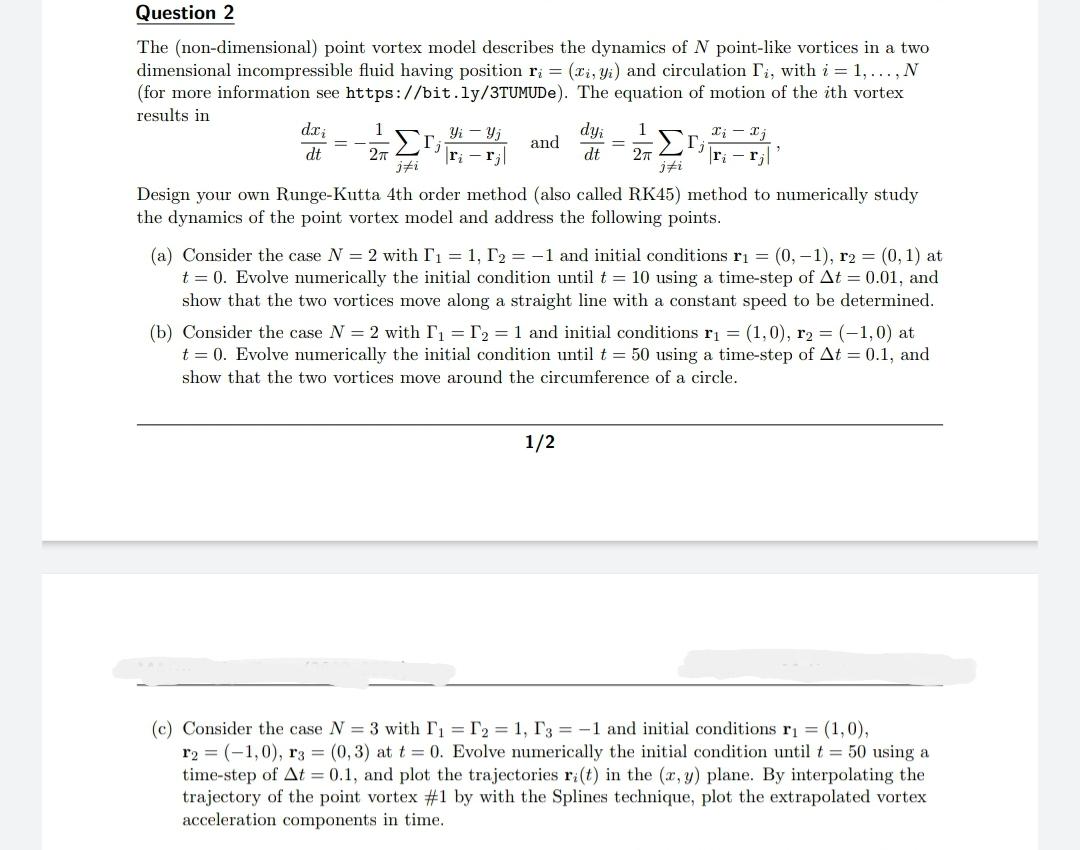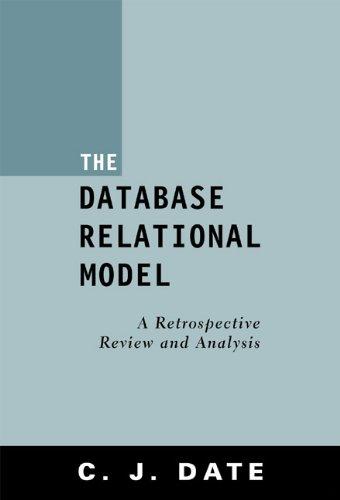please I need the solution by Python, thanks in advance

The (non-dimensional) point vortex model describes the dynamics of N point-like vortices in a two dimensional incompressible fluid having position ri=(xi,yi) and circulation i, with i=1,,N (for more information see https://bit.ly/3TUMUDe). The equation of motion of the i th vortex results in dtdxi=21j=ijrirjyiyjanddtdyi=21j=ijrirjxixj, Design your own Runge-Kutta 4th order method (also called RK45) method to numerically study the dynamics of the point vortex model and address the following points. (a) Consider the case N=2 with 1=1,2=1 and initial conditions r1=(0,1),r2=(0,1) at t=0. Evolve numerically the initial condition until t=10 using a time-step of t=0.01, and show that the two vortices move along a straight line with a constant speed to be determined. (b) Consider the case N=2 with 1=2=1 and initial conditions r1=(1,0),r2=(1,0) at t=0. Evolve numerically the initial condition until t=50 using a time-step of t=0.1, and show that the two vortices move around the circumference of a circle. 1/2 (c) Consider the case N=3 with 1=2=1,3=1 and initial conditions r1=(1,0), r2=(1,0),r3=(0,3) at t=0. Evolve numerically the initial condition until t=50 using a time-step of t=0.1, and plot the trajectories ri(t) in the (x,y) plane. By interpolating the trajectory of the point vortex \#1 by with the Splines technique, plot the extrapolated vortex acceleration components in time. The (non-dimensional) point vortex model describes the dynamics of N point-like vortices in a two dimensional incompressible fluid having position ri=(xi,yi) and circulation i, with i=1,,N (for more information see https://bit.ly/3TUMUDe). The equation of motion of the i th vortex results in dtdxi=21j=ijrirjyiyjanddtdyi=21j=ijrirjxixj, Design your own Runge-Kutta 4th order method (also called RK45) method to numerically study the dynamics of the point vortex model and address the following points. (a) Consider the case N=2 with 1=1,2=1 and initial conditions r1=(0,1),r2=(0,1) at t=0. Evolve numerically the initial condition until t=10 using a time-step of t=0.01, and show that the two vortices move along a straight line with a constant speed to be determined. (b) Consider the case N=2 with 1=2=1 and initial conditions r1=(1,0),r2=(1,0) at t=0. Evolve numerically the initial condition until t=50 using a time-step of t=0.1, and show that the two vortices move around the circumference of a circle. 1/2 (c) Consider the case N=3 with 1=2=1,3=1 and initial conditions r1=(1,0), r2=(1,0),r3=(0,3) at t=0. Evolve numerically the initial condition until t=50 using a time-step of t=0.1, and plot the trajectories ri(t) in the (x,y) plane. By interpolating the trajectory of the point vortex \#1 by with the Splines technique, plot the extrapolated vortex acceleration components in time







